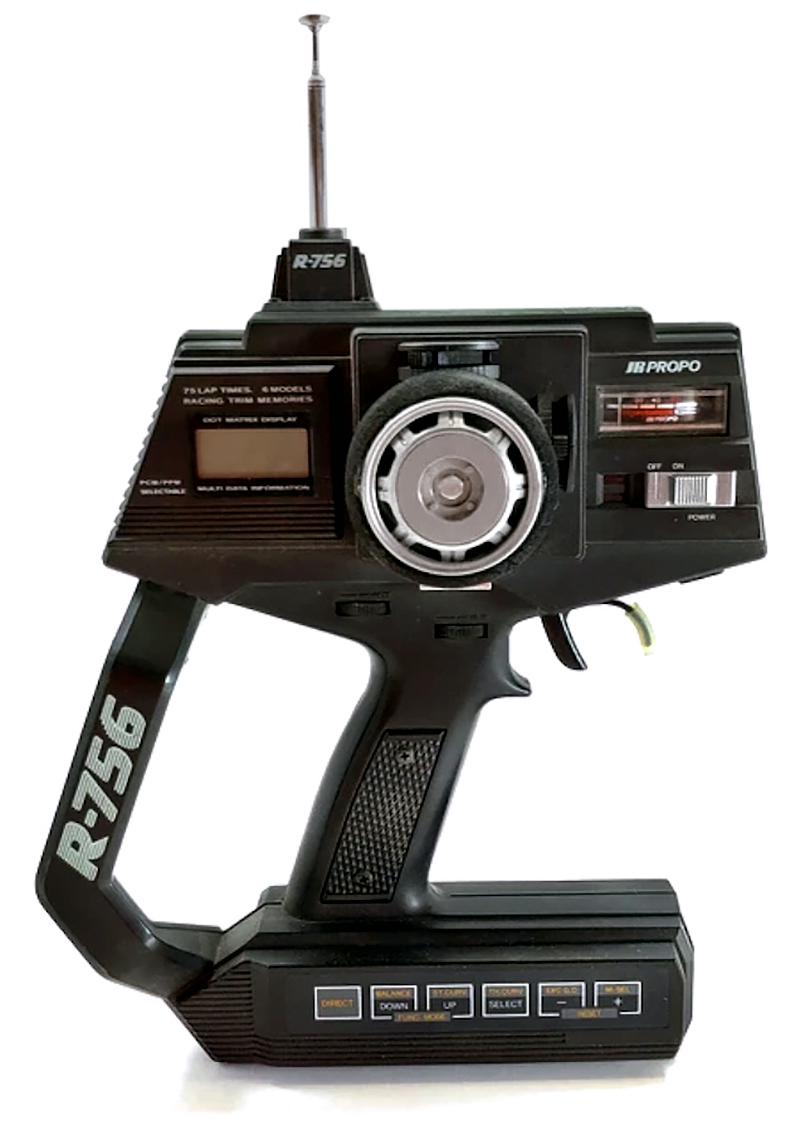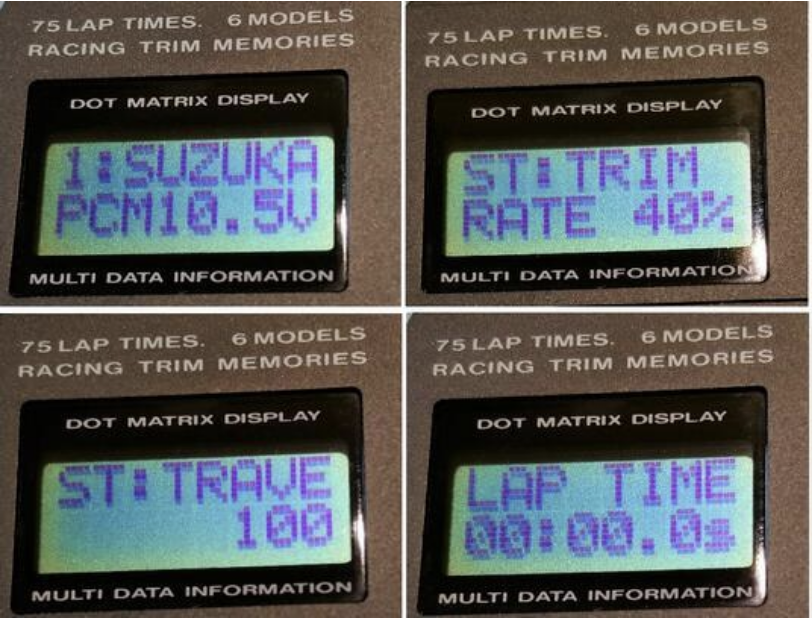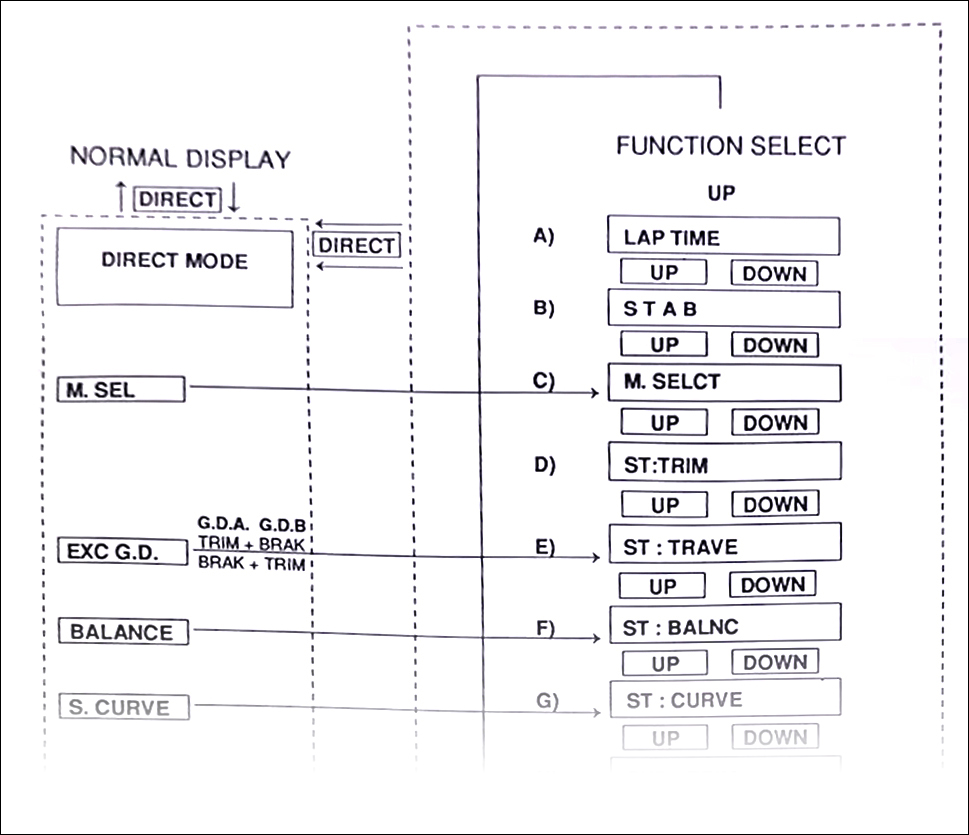If your answer to that headline is, “Of course I remember the R-756,” congrats on being a certified old guy. Back in 1992, JR Propo’s top pistol was a high-tech, professional-grade transmitter for the best drivers, or anyone who wanted to feel like one. Of course, high-tech in 1992 wasn’t nearly as high as it is today – note the analog needle-type battery meter above the on-off switch. The R-756 was certainly among the last to have one of those, but we’re here to talk about is what the 756 was first to have: an LCD screen.

“What LCD screen?” Look closer, to the left of the wheel. It’s not much bigger than a 4X2 Lego brick – so yeah, not a big screen. The dot-matrix display is just large enough to display abbreviated function names and their values, like so:

The excerpt from the manual below shows how some other functions appeared on the screen. M. SELCT is model select (6-model memory was standard), and you can see the abbreviations for steering (ST) trim, travel, balance (which was the endpoints, as I recall), and curve (exponential).

A row of membrane-style buttons allowed you to navigate the adjustable settings and raise or lower the values. It wasn’t exactly intuitive, but after a pass through the instructions, it was pretty easy to navigate and setup the 756.

Though it recorded and displayed settings digitally, the 756 did not have digital trim switches. As you can see below, the radio had analog trim levers above and beside the wheel, and offered a pair of user-assignable dials positioned for easy thumb-rolling. The silver button above the dials controlled the lap timer functions, as I recall.

The analog dials and trim inputs created a problem: what would happen if their positions were changed while the radio was switched off? JR’s solution was the “trim alarm.” If any settings were changed while the radio was off, the 756 would beep at you when you powered it up to let you know the settings had been changed. But which settings? And how much were they changed? The display told you by showing the name of the altered setting with an arrow indicating which direction to move the dial or lever to restore the setting. When you reached the correct position, the arrow would disappear, and you’d get a confirmation beep. Repeat until all the settings are restored.

Adjustable-features-wise, the R-756 wasn’t exactly jam-packed by the standards of modern top-tier systems, but in its day, it represented a new high for tuning versatility and precision. And, if you had the PCM/PPM module for it, the ability to have a runaway-preventing fail-safe system was a real plus. That’s something we take for granted in the 2.4GHz era.

I think the R-756 is still a good-looking unit some 30+ years after it arrived on the scene, and if it could somehow be converted to 2.4GHz, I’d happily use one today. I especially like wrist-bar thing with the big R-756 on it, a bold touch that made sure everyone on the drivers’ stand knew you had serious gear – which didn’t necessarily mean you could drive, but hey, it’s fun to have the good stuff if you can afford it.
Images: Ruten.com seller; JR Propo
 RC Driver The Best In RC Car & Truck News, Reviews & Video
RC Driver The Best In RC Car & Truck News, Reviews & Video 







